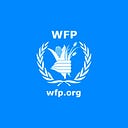Ready for take-off in South Sudan
An aid worker’s maiden humanitarian flight
Upon arriving in Juba for the first time, I looked out of the window to get a feel of my surroundings, the first thing I saw was the ubiquitous World Food Programme logo on a nearby plane. I was aware that air operations were an integral part of WFP’s work, but I knew very little about the context in South Sudan.
While chatting with some colleagues, I later discovered that the aircraft is part of the fleet of the United Nations Humanitarian Air Service (UNHAS), a humanitarian airline managed by WFP for the entire humanitarian community. But what did UNHAS do exactly? Of all UN agencies, why did they use the WFP logo? To answer the slew of questions that were brewing in my mind, I decided to find Mario Sibrian, a former pilot turned humanitarian air transport officer and the Head of UNHAS in South Sudan. I was fortunate to bump into him at the WFP offices in Juba and he was kind enough to tell me all about UNHAS and its integral role in humanitarian responses around the world.
“UNHAS began its operations in 2004. Currently, South Sudan is UNHAS’s largest operation, followed by the Democratic Republic of Congo,” explained Sibrian.
UNHAS travels to some of the remotest locations around the world, transporting 32,000 passengers and more than 300 metric tons of cargo per month to over 323 regular destinations.
Only the very best are accepted!
As we talked, I was amazed to discover the breadth of the operation in South Sudan. It was impressive on any scale, but even more so due to the challenges the country poses with its tough weather conditions and limited infrastructure. For example, during the dry season, pilots need to be especially vigilant because dust particles are liable to damage engines. In addition, most locations they travel to do not have a paved runway or formal airport.
“We train a field focal point who walks the runway prior to the arrival of aircraft as a safety precaution,” said Sibrian.
The focal point checks the runaway and clears all obstacles which can be goats, cattle or even people. Despite such hurdles, UNHAS delivers flights to a whopping 55 scheduled locations, and serves other locations on ad-hoc basis as may be requested by nearly 300 user organizations dependent on its service to fulfill their mandates in the country.
Security is paramount for UNHAS. This is reflected not only in the meticulous maintenance of the planes, but also the rigorous testing that pilots undergo. The pilots hail from nations as diverse as Uganda, Ethiopia, The Czech Republic, and Russia — and not only have to undergo their respective countries’ aviation testing but must also obtain very high scores on the intense UNHAS evaluations.
“Many are called but few are chosen,” jokes Sibrian.
Embracing innovation
UNHAS is also embracing innovation in South Sudan to share information, better understand user needs and to enhance its responsiveness. Among other things it has introduced a Quick-Reader barcode that can be found on an UNHAS card. After scanning the barcode, users can access the flight schedule, Aviation Annual Report, and Passenger Booking Form among other relevant information. Furthermore, the air service also asks that passengers participate in a survey that may assist the organization to improve the quality of its services.
My first flight would take me to Aweil, close to the border with Sudan and approximately 800 km north of South Sudan’s capital, Juba. It was a monitoring visit, a key part of my role as a Programme support officer, looking at ongoing school feeding and resilience building activities in the region.
Once inside the plane, my anticipation mounts as the propellers begin turning. The captain’s voice breaks through the silence as he announces the forecast on board the DASH-8 Q400 plane. In between perusing the 2018 WFP Aviation Annual Report and consuming the drinks and snacks served, I marveled at the lush vegetation below as the aircraft hovered above the clouds. I thought about the potentials of this vast and green country, I wondered about lost opportunities and relished the thought that through our efforts, lives are saved and changed daily.
Approximately two hours later, and after a very smooth landing, I arrived in Aweil. As I slowly descended the steps, I feel sheer delight. I can now count myself among the initiated as a satisfied UNHAS passenger.
Story by Saddal Diab, Programme Support Officer WFP South Sudan
